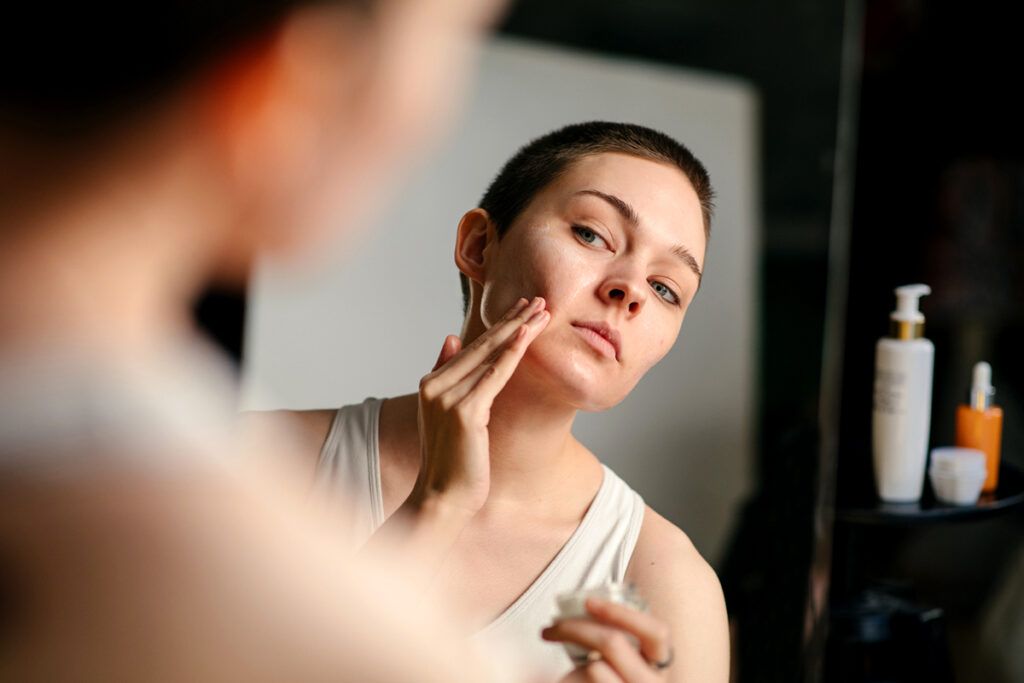Rosacea and eczema both can cause your skin to break out in itchy red bumps or patches. Because of this similarity, it can be tough to know exactly which one you have.
Full-body skin exams, medical tests, rash patterns, and your family history all offer important clues, says Karan Lal, DO. He’s a dermatologist at UMass Memorial Medical Center in Worcester, Massachusetts.
These conditions all have some things in common. For example, they do not pass from one person to another and tend to run in families. But they do have different causes and treatments, and there are some different symptoms you can look out for.
Rosacea vs. eczema: How to tell what you have

Rosacea and eczema have several similarities. They both cause itchy, discolored, dry patches on your skin. They both also happen in flares, meaning they will get better and worse at different times.
At first glance, you might not know which condition is affecting you. But there are many ways to help you tell the difference between them.
- Location: Rosacea usually appears on your face, cheeks, and nose. Eczema can appear anywhere on your body and is common on your arms or torso. If it does appear on your face, it’s more common on your eyelids or around your mouth.
- Symptoms: Alongside the itchy, dry skin found in eczema, rosacea is also likely to cause pus-filled or raised bumps that look similar to acne. Eczema doesn’t usually cause this.
- Who it affects: Eczema is more common in children, whereas rosacea is more common in adults ages between 30 and 50 years old.
- Triggers: Exposure to the sun is a top trigger of rosacea, whereas it may benefit some people with eczema. Things in the environment, such as harsh chemicals or dust mites, often trigger Eczema.
Need a diagnosis or prescription quickly? Optum Perks offers personalized on-demand care in as little as 15 minutes with no video or appointment required. For $25, answer a few questions online and receive a diagnosis and treatment plan from a board certified healthcare professional. Get started here.
What to know about rosacea
Rosacea is a common skin condition that typically appears on the face. It often starts as more frequent blushing or flushing. It can show up as other signs and symptoms, including:
- visible blood vessels in the face
- acne-like breakouts
- thick, bumpy skin
- irritated, swollen eyes
Symptoms can flare up for weeks or months and then disappear. While there’s no cure, there are ways to manage it. Over time, some people with rosacea develop permanent skin discoloration around the center of their face.
Who gets it?
Rosacea can happen to anyone at any age. But most people who get it are people with fair skin and between the ages of 30 and 50 years, says the American Academy of Dermatology (AAD). Women are more likely than men to get rosacea.
But note that anyone can get rosacea. It may be underdiagnosed or underreported in people with darker skin colors because people expect it to cause redness, but this isn’t always the case in skin of color.
What causes it?
Experts aren’t sure exactly what causes rosacea. But the AAD says a mix of genetic and environmental triggers may cause them. Common triggers include:
- sunlight
- heightened emotions and stress
- hot drinks and spicy foods
- alcohol, such as red wine
- wind and extreme temperatures
- some blood pressure medications
- certain skin care products
How it’s treated?
Sun exposure is the top trigger for rosacea, so make sure you regularly practice sun safety. Try to avoid midday sun and wear broad-spectrum sunscreen with a sun protection factor (SPF) of 30 or higher every day. Your doctor may also recommend using gentle cleansers on skin with rosacea.
Laser and light-based treatments can help reduce or even eliminate skin discoloration. Many people also use a topical gel called brimonidine (Mirvaso) or a cream called oxymetazoline that can reduce facial skin discoloration.
You can use sodium sulfacetamide (Ovace Plus) as a cleanser or lotion. Skin medications to help manage pimples due to rosacea include azelaic acid (Finacea), metronidazole (Metrogel®), doxycycline (Adoxa), and ivermectin (Soolantra®).
If you need help covering the cost of medications, the free Optum Perks Discount Card could help you save up to 80% on prescription drugs. Follow the links on drug names for savings on that medication, or search for a specific drug here.
